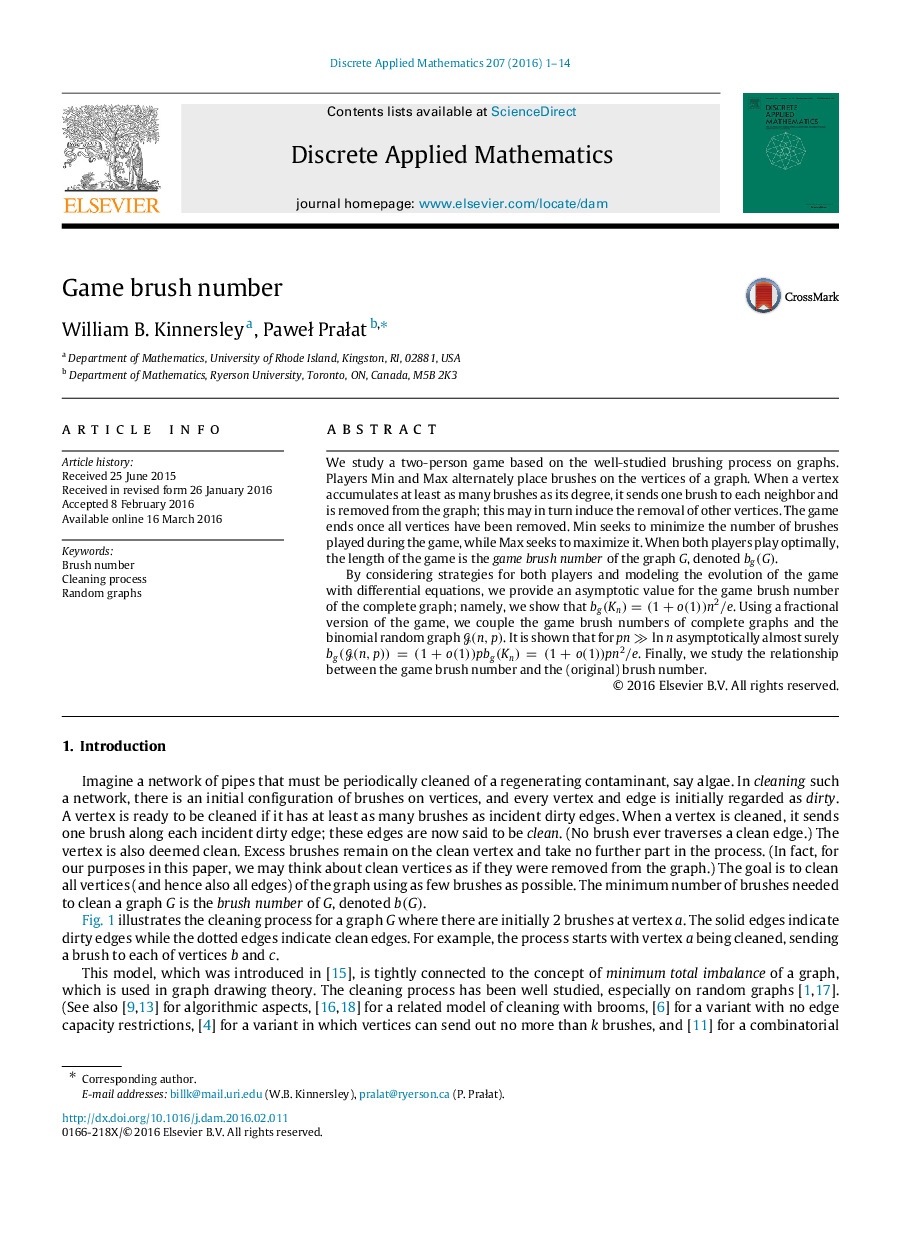| Article ID | Journal | Published Year | Pages | File Type |
|---|---|---|---|---|
| 417795 | Discrete Applied Mathematics | 2016 | 14 Pages |
We study a two-person game based on the well-studied brushing process on graphs. Players Min and Max alternately place brushes on the vertices of a graph. When a vertex accumulates at least as many brushes as its degree, it sends one brush to each neighbor and is removed from the graph; this may in turn induce the removal of other vertices. The game ends once all vertices have been removed. Min seeks to minimize the number of brushes played during the game, while Max seeks to maximize it. When both players play optimally, the length of the game is the game brush number of the graph GG, denoted bg(G)bg(G).By considering strategies for both players and modeling the evolution of the game with differential equations, we provide an asymptotic value for the game brush number of the complete graph; namely, we show that bg(Kn)=(1+o(1))n2/ebg(Kn)=(1+o(1))n2/e. Using a fractional version of the game, we couple the game brush numbers of complete graphs and the binomial random graph G(n,p)G(n,p). It is shown that for pn≫lnnpn≫lnn asymptotically almost surely bg(G(n,p))=(1+o(1))pbg(Kn)=(1+o(1))pn2/ebg(G(n,p))=(1+o(1))pbg(Kn)=(1+o(1))pn2/e. Finally, we study the relationship between the game brush number and the (original) brush number.
